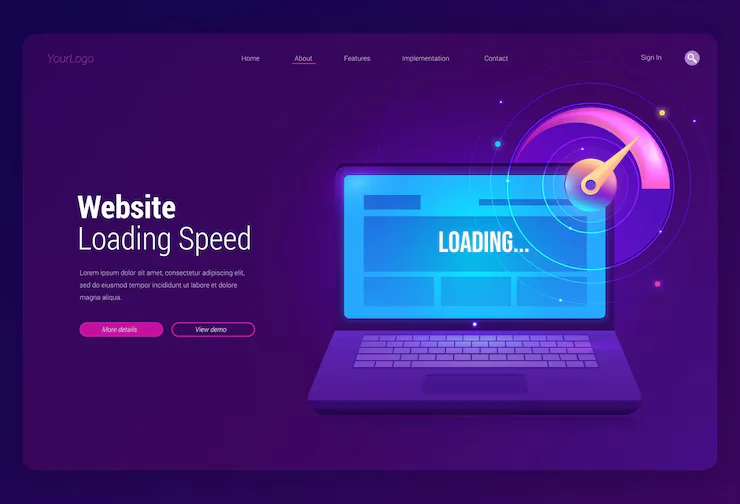How Innovative Browsers are Revolutionizing Your Digital Experience

Introduction: The Rise of Intelligent Browsers
The digital landscape is overflowing with ever-increasing tasks, information, and interactions. To navigate this complex ecosystem, a new generation of intelligent browsers has emerged, promising to transform how we experience the internet. These advanced tools blend powerful features with user-centric designs, aiming to simplify digital life and enhance productivity across all user levels.
When you meet Shift browser, you encounter a refreshingly inventive approach to browser design—a platform crafted not just for browsing but for integrating into your daily workflow. By centralizing apps, streamlining tabs, and facilitating multi-account access, intelligent browsers like Shift are setting new standards in digital productivity and online engagement.
Streamlining Online Activities
Today’s internet users juggle a wide range of digital tasks—from collaborative workspaces to real-time communication, e-commerce, and data research. Intelligent browsers are now designed to streamline these processes, minimizing technical friction and boosting task efficiency. Features such as:
- Tab grouping and smart search
- Split-screen multitasking
- Session memory recall
- Unified messaging platforms (Slack, WhatsApp, Gmail)
…allow users to manage various online duties without toggling between applications.
Emerging browsers like Arc and Sidekick are going even further by introducing sidebar-based workflows, command palette-style navigation, and memory-efficient tab suspension. These enhancements help users maintain focus and reduce digital fatigue, transforming the browsing experience into a seamless extension of professional and personal routines.
Enhancing Productivity with Integrated Tools
Modern browsers are no longer passive gateways to information—they are productivity platforms. Today’s intelligent browsers feature:
- Built-in task managers and to-do lists
- AI writing assistants and note-taking tools
- Cloud-based bookmarking systems
- Seamless integration with productivity suites like Notion, Google Workspace, Trello, and Asana
These tools centralize user activities, reduce software clutter, and elevate overall performance.
According to PCMag, browser-integrated workspaces can increase productivity by up to 25% for remote professionals. Moreover, AI-driven suggestions—such as auto-filling repetitive forms, summarizing web pages, or flagging priority emails—reduce cognitive load and create smoother workflows, especially for freelancers, developers, and digital marketers.
AI-Powered Browsing: The Next Frontier
One of the most game-changing trends is the integration of artificial intelligence within browsers. Tools like AI summarization, intelligent tab suggestions, and smart reading modes are beginning to emerge. Microsoft Edge and Opera One now include AI sidebars powered by ChatGPT or proprietary LLMs, offering real-time assistance, summarizing articles, generating content, and more.
These AI-infused features are expected to become core browsing elements rather than optional add-ons, redefining how users interact with web content—whether for work, learning, or entertainment.
Privacy and Security Features
In an age of growing cyber threats and data exploitation, privacy is paramount. Intelligent browsers are prioritizing built-in privacy features to protect user data:
- Enhanced tracking protection
- Encrypted browsing sessions
- Secure password managers
- Private browsing with VPN support
- Third-party cookie blocking by default
Brave, for example, combines privacy with blockchain incentives, allowing users to earn Basic Attention Tokens (BAT) while browsing securely. Meanwhile, Firefox continues to champion open-source transparency, making security a cornerstone of its innovation.
These advancements ensure users can browse with confidence, knowing their sensitive information is shielded from malicious actors and invasive trackers.
User-Friendly Interfaces and Accessibility Enhancements
Ease of use remains fundamental. Intelligent browsers emphasize streamlined user interfaces, offering:
- Drag-and-drop customization
- Dark mode and reading mode enhancements
- Voice navigation and screen reader compatibility
- Minimalist UI with keyboard shortcuts
Accessibility improvements are also gaining traction. Browsers are adding voice dictation, font adjustability, and screen color optimization to serve users with visual or cognitive impairments.
Such advancements promote digital inclusivity and empower a wider range of users to engage with the internet effortlessly.
Supporting Multi-Platform Use
With users toggling between smartphones, tablets, laptops, and wearables, cross-device compatibility is more essential than ever. Intelligent browsers are embracing:
- Cloud-syncing of tabs, history, and bookmarks
- Progressive Web App (PWA) support
- Instant session restoration across platforms
Browsers like Google Chrome and Safari now offer handoff features, enabling users to start browsing on one device and continue seamlessly on another. This fluidity enhances convenience and productivity for people who work or study across multiple environments.
Developer and Power-User Features
Beyond general users, modern browsers are increasingly catering to developers and tech-savvy professionals. Some intelligent browsers offer:
- Built-in code inspectors and debugging tools
- Local API testing environments
- Custom script injection
- DevTools enhancements and network throttling
Browsers like SigmaOS and Vivaldi are giving power users unparalleled control, helping them customize every aspect of the browser to match specific workflows—be it coding, trading, content creation, or research.
Sustainable and Resource-Efficient Browsing
Another emerging trend is eco-conscious browser design. To reduce digital carbon footprints, intelligent browsers are optimizing for:
- Low memory consumption
- Battery-saving modes
- Server-side rendering to reduce client-side processing
Ecosia, a browser that plants trees based on ad revenue, combines eco-sustainability with function. These green innovations are becoming a part of the intelligent browser narrative, especially appealing to environmentally conscious users.
Future Outlook of Digital Browsing
The future of browsing is being reshaped by personalization, automation, and human-AI collaboration. Trends on the horizon include:
- Predictive browsing based on behavioral patterns
- Voice-first interfaces and natural language navigation
- Augmented reality (AR) and spatial web support
- Digital identity wallets for seamless login and authentication
As highlighted by The Verge, browsers may eventually evolve into modular ecosystems—intelligent, adaptive, and deeply integrated with cloud computing and edge processing. This marks a new era where browsing is not just about viewing web pages but experiencing a fully responsive, intelligent digital assistant.

How using an SIP Calculator daily helps in micro-investing

Access Any Business Platform Worldwide with iTop VPN

How Altify's Enablement Solutions Help Sales Teams Close Deals Faster

AI in Marketing Is No Longer a Buzzword — It’s the Strategy

Srinivasa Rao Challa Champions AI-Powered Financial Systems for a Smarter, Safer Economy

Why Website Speed Matters More Than Ever: The Science Behind Faster Load Times

What You Need to Know About Driver Update Online in Minutes

Add Border to Photo Instantly and Elevate Your Visuals Online








